Som tu už tisíce rokov
I Have Been Here for Thousands Years
2024, Artrooms Moravany 6, Slovenské Benátky. Umenie mystifikácie,
variabilné rozmery, sochárska hlina, dve audiostopy
2024, Artrooms Moravany 6, Slovak Venice. The Art of Mystification,
variable dimensions, sculptural clay, two audio tracks
Zuzana Branišová, Roman Gajdoš, Erik Michalčík

V projekte s názvom Som tu už tisíce rokov prostredníctvom kumulovania objektov referujúcich k ženskému torzu a zvukovým stopám uvažujeme o základných mechanizmoch, ktoré môžu viesť k tzv. mystifikácii. Podľa výkladového slovníka je slovo mystifikácia interpretované ako zámerné klamanie, oklamanie nepravdivou správou či ako zahmlievanie skutočnosti.
Skreslenie a deformácia faktu či dokonca iba autentický pohľad na jednu a tú istú vec je nosnou myšlienkou projektu, ktorú komunikujeme cez hlinené objekty-sošky a audiom s nahovorenými textami vytvorených s pomocou AI.
Drobné hlinené plastiky sú delegovaných dielom návštevníkov výstavy, ktorí počas nej môžu modelovať. Podstatou tejto aktivity je vytvorenie konkrétnej veci na základe predstavy o nej samotnej. Podnetom pre modelovanie plastík je audio, ktorého obsahom je priama reč známeho pravekého artefaktu viažuceho sa k Moravanom nad Váhom. Text je značne patetický a prehlbuje stereotypy ohľadom plastík tohto typu.
Je evidentné, že hlinené torzá evokujú praveké venuše, no v inštalácii sa nikde o tomto fakte explicitne nedozvieme. Môžeme iba tušiť, domnievať sa, hádať a zároveň si sami v sebe potvrdzovať, že v kontexte prostredia „určite“ ide o známu pravekú sošku. Je to skutočne tak?
Inštalácia má dve základné vrstvy uvažovania. Na jednej strane ide o nevedomú mystifikáciu zo strany participujúcich subjektov, ktoré sošky vytvárajú, na strane druhej sú tieto výtvory následne interpretované nahovoreným textom, ktorý celé dielo posúva do absurdnej pseudohistorickej roviny.
Skreslenie a deformácia faktu či dokonca iba autentický pohľad na jednu a tú istú vec je nosnou myšlienkou projektu, ktorú komunikujeme cez hlinené objekty-sošky a audiom s nahovorenými textami vytvorených s pomocou AI.
Drobné hlinené plastiky sú delegovaných dielom návštevníkov výstavy, ktorí počas nej môžu modelovať. Podstatou tejto aktivity je vytvorenie konkrétnej veci na základe predstavy o nej samotnej. Podnetom pre modelovanie plastík je audio, ktorého obsahom je priama reč známeho pravekého artefaktu viažuceho sa k Moravanom nad Váhom. Text je značne patetický a prehlbuje stereotypy ohľadom plastík tohto typu.
Je evidentné, že hlinené torzá evokujú praveké venuše, no v inštalácii sa nikde o tomto fakte explicitne nedozvieme. Môžeme iba tušiť, domnievať sa, hádať a zároveň si sami v sebe potvrdzovať, že v kontexte prostredia „určite“ ide o známu pravekú sošku. Je to skutočne tak?
Inštalácia má dve základné vrstvy uvažovania. Na jednej strane ide o nevedomú mystifikáciu zo strany participujúcich subjektov, ktoré sošky vytvárajú, na strane druhej sú tieto výtvory následne interpretované nahovoreným textom, ktorý celé dielo posúva do absurdnej pseudohistorickej roviny.
In the project titled I Have Been Here for Thousands of Years, we explore the fundamental mechanisms that can lead to so-called mystification through the accumulation of objects referencing the female torso and accompanying sound recordings. According to the dictionary definition, mystification is understood as deliberate deception, misleading through false information, or obscuring reality.
The distortion and deformation of fact—or even just an authentic but singular perspective on the same subject—is the core idea of the project. This is communicated through clay figurines and audio recordings featuring spoken texts generated with the help of AI.
The small clay sculptures are created as delegated artworks by visitors to the exhibition, who are invited to model their own pieces during the show. The essence of this activity lies in creating a specific object based solely on an internal idea or imagined form. The impulse for this sculpting process is an audio recording in which a famous prehistoric artifact associated with Moravany nad Váhom speaks directly. The text is deliberately exaggerated and sentimental, deepening the stereotypes commonly linked to figurines of this kind.
The clay torsos clearly evoke prehistoric "Venuses," yet this connection is never explicitly stated within the installation. The audience is left to sense, guess, and assume—perhaps even convince themselves—that, given the context, this must certainly refer to a well-known prehistoric figure. But is that really the case?
The installation operates on two fundamental interpretive levels. On one hand, there is the unconscious mystification on the part of the participating individuals who create the figurines. On the other hand, these creations are subsequently reinterpreted through narrated text, shifting the entire work into a realm of absurd pseudo-historical narrative.
The distortion and deformation of fact—or even just an authentic but singular perspective on the same subject—is the core idea of the project. This is communicated through clay figurines and audio recordings featuring spoken texts generated with the help of AI.
The small clay sculptures are created as delegated artworks by visitors to the exhibition, who are invited to model their own pieces during the show. The essence of this activity lies in creating a specific object based solely on an internal idea or imagined form. The impulse for this sculpting process is an audio recording in which a famous prehistoric artifact associated with Moravany nad Váhom speaks directly. The text is deliberately exaggerated and sentimental, deepening the stereotypes commonly linked to figurines of this kind.
The clay torsos clearly evoke prehistoric "Venuses," yet this connection is never explicitly stated within the installation. The audience is left to sense, guess, and assume—perhaps even convince themselves—that, given the context, this must certainly refer to a well-known prehistoric figure. But is that really the case?
The installation operates on two fundamental interpretive levels. On one hand, there is the unconscious mystification on the part of the participating individuals who create the figurines. On the other hand, these creations are subsequently reinterpreted through narrated text, shifting the entire work into a realm of absurd pseudo-historical narrative.

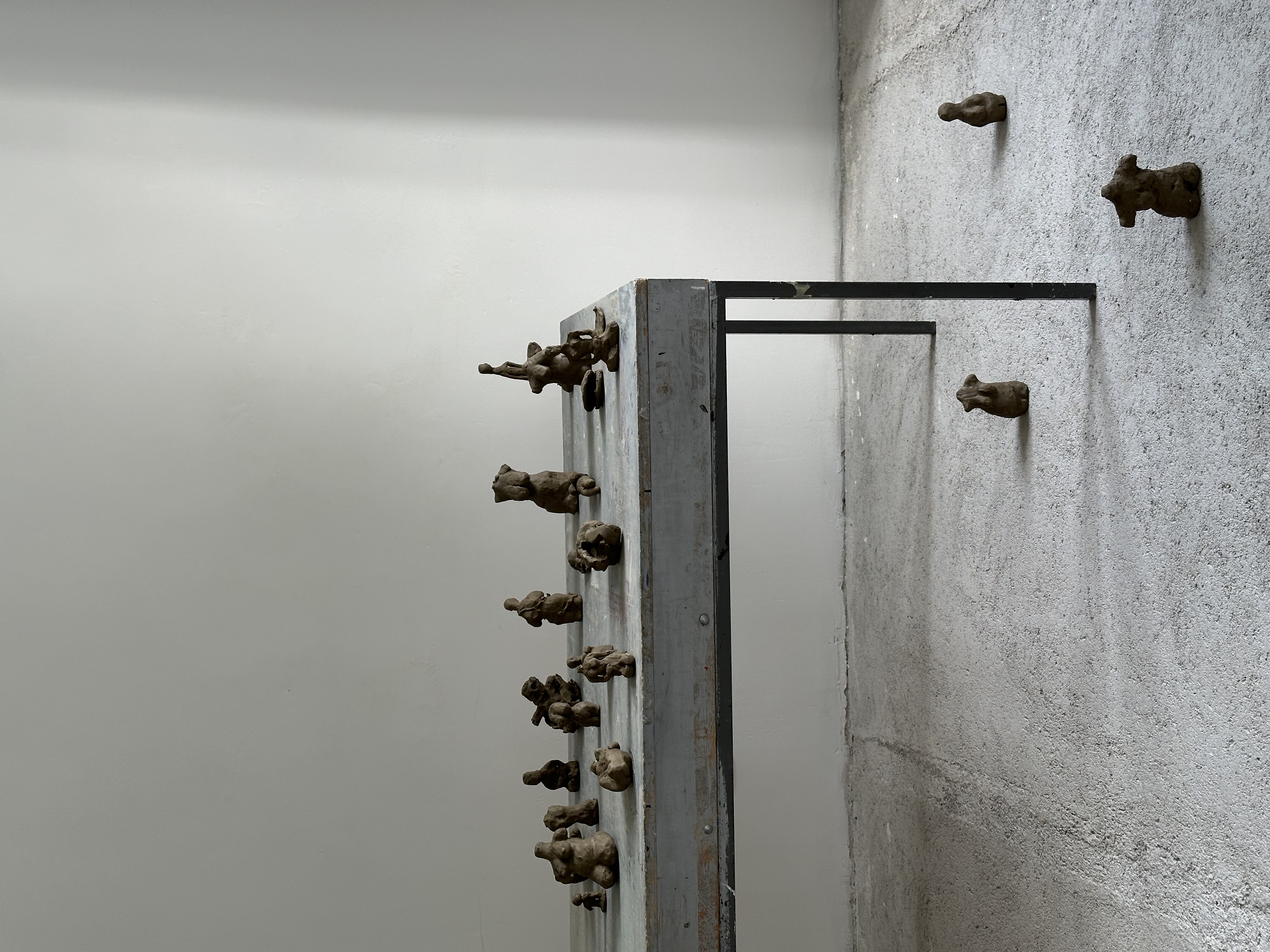




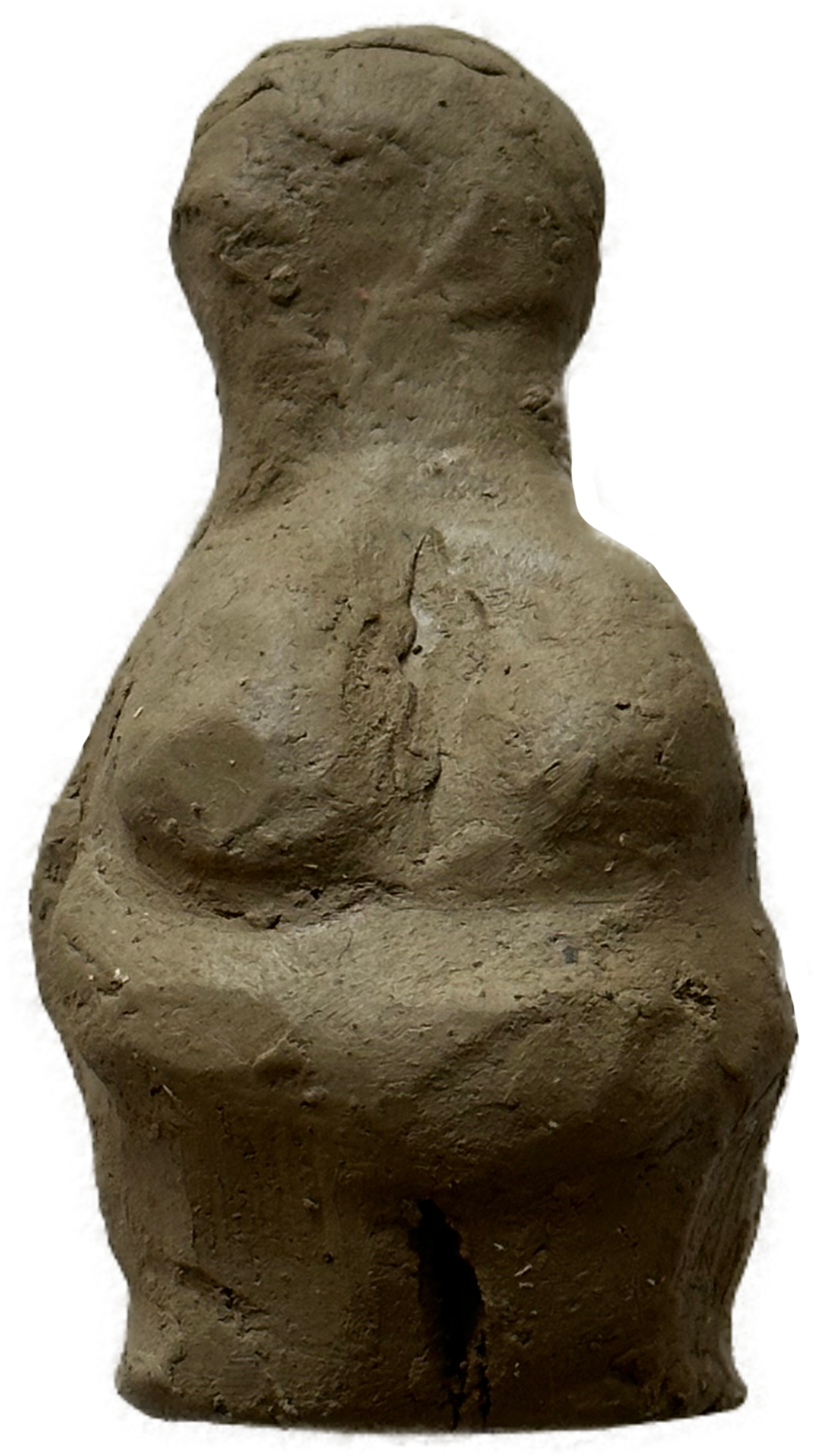


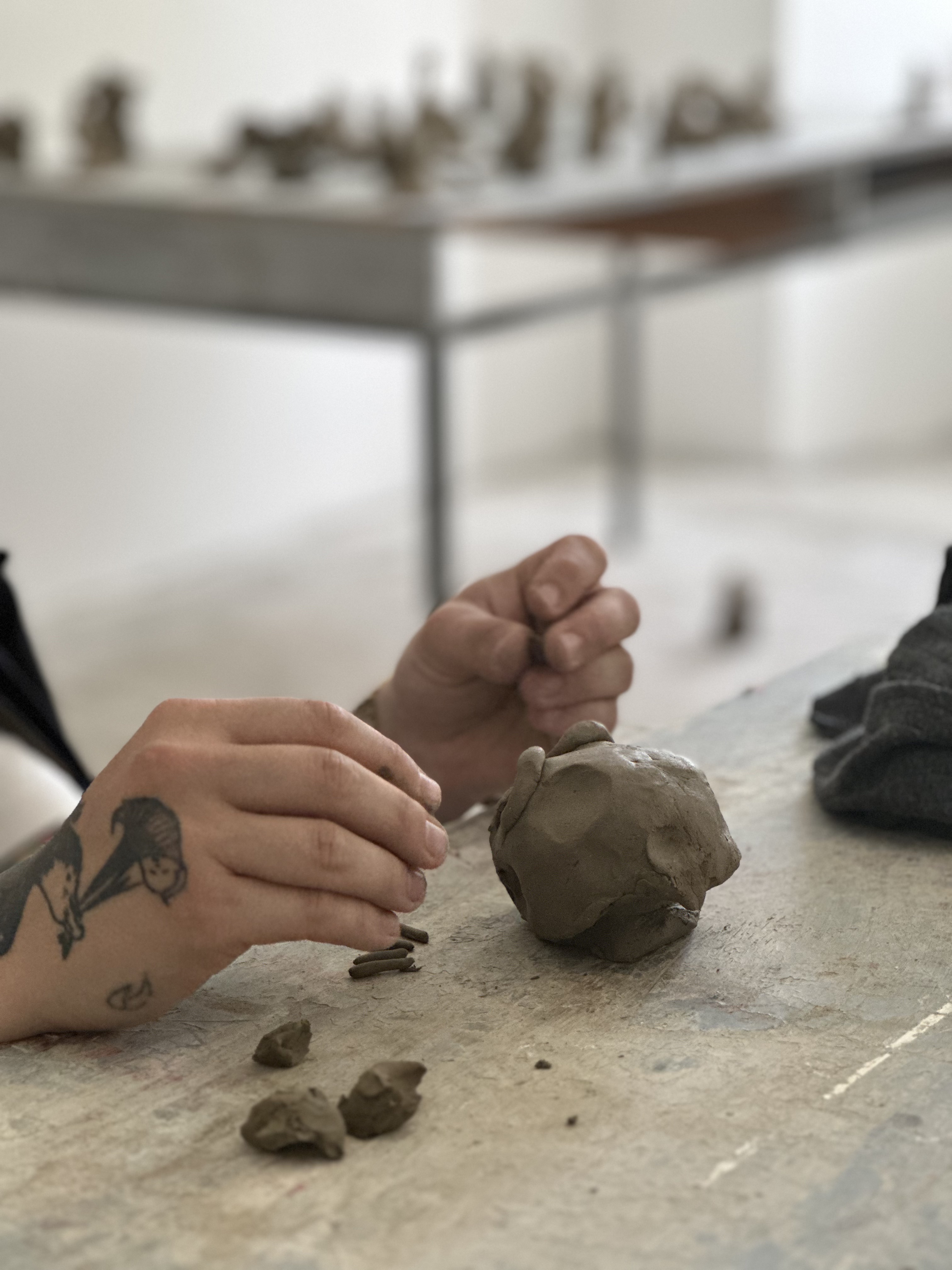

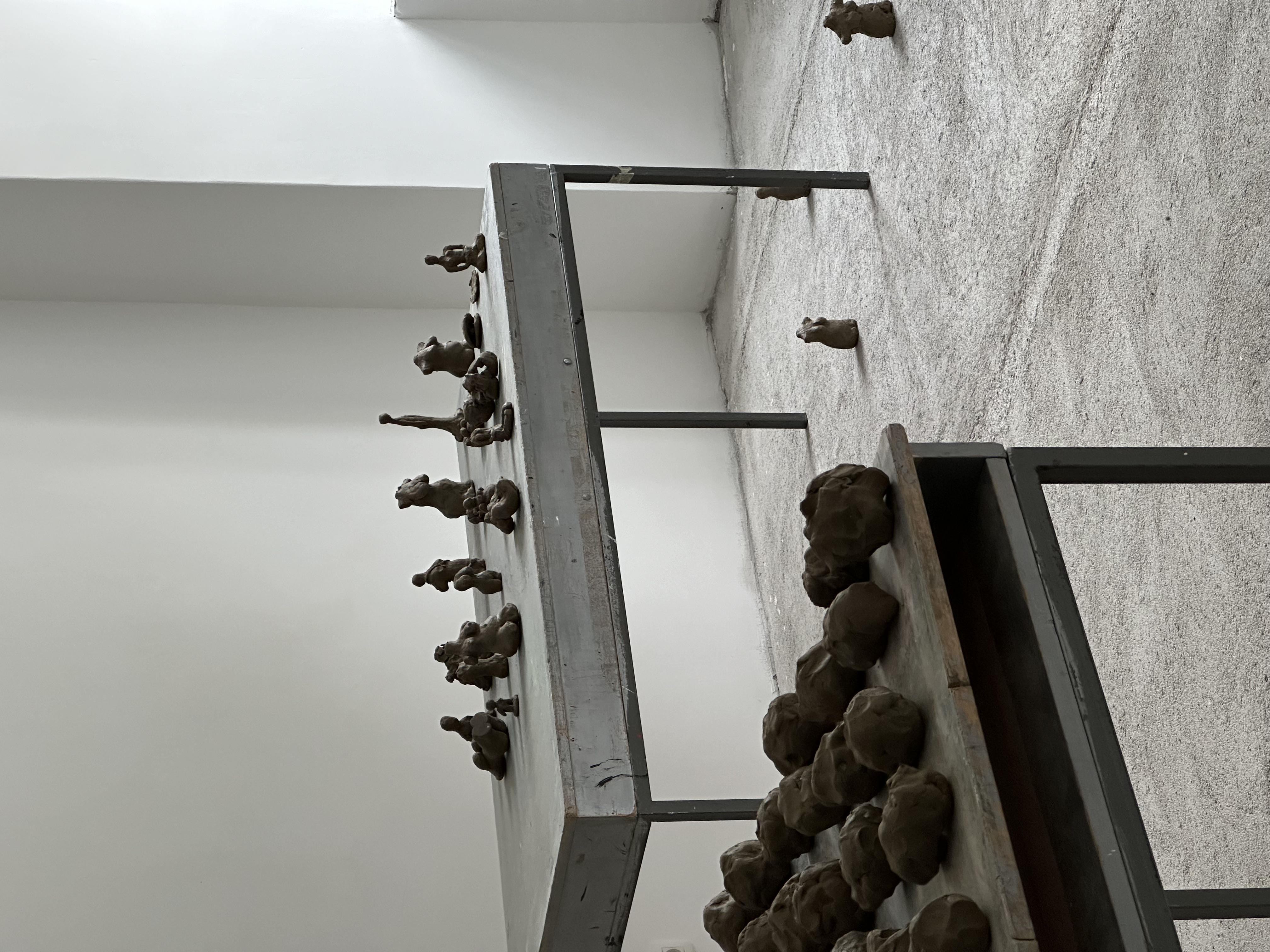
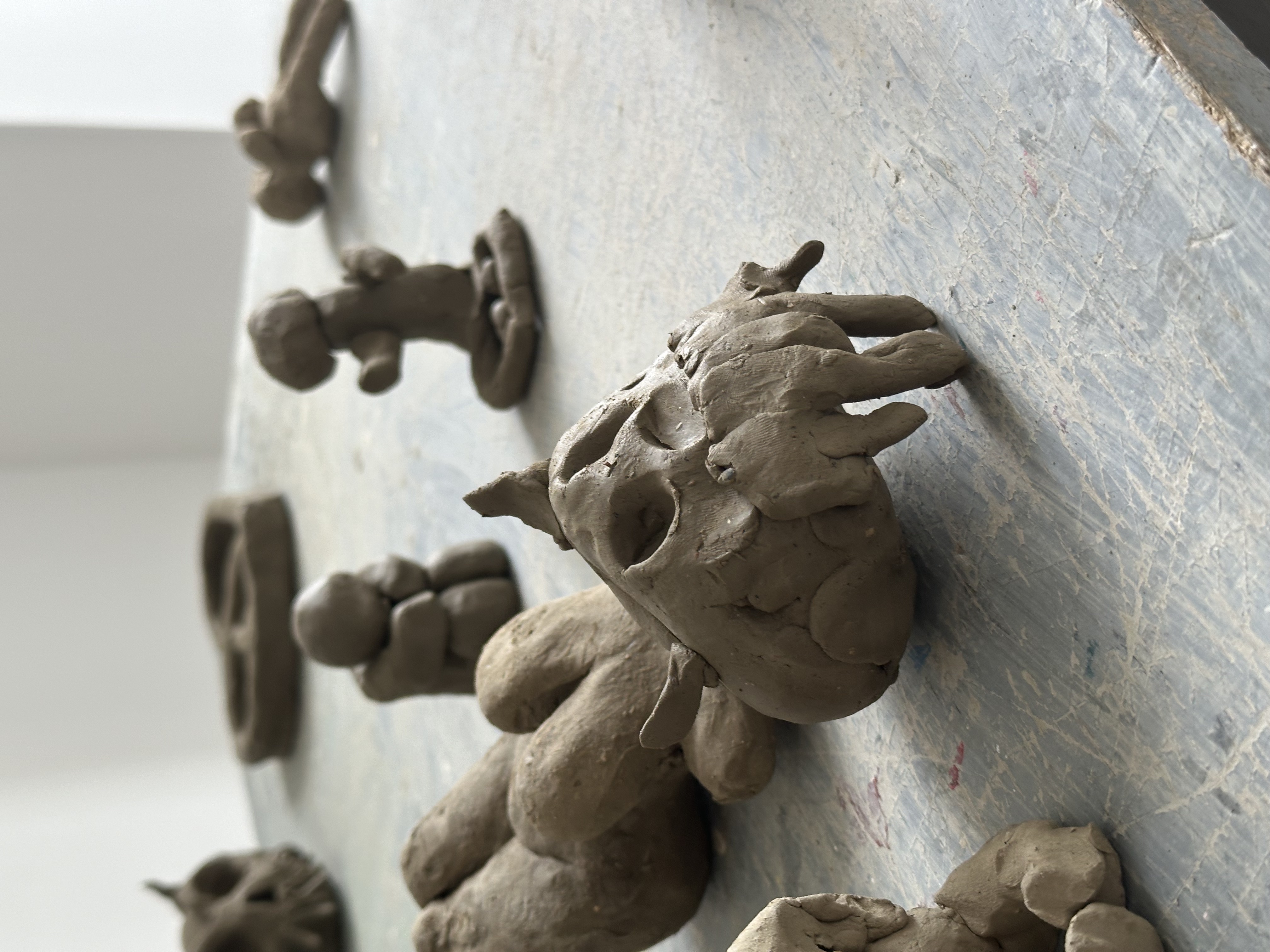
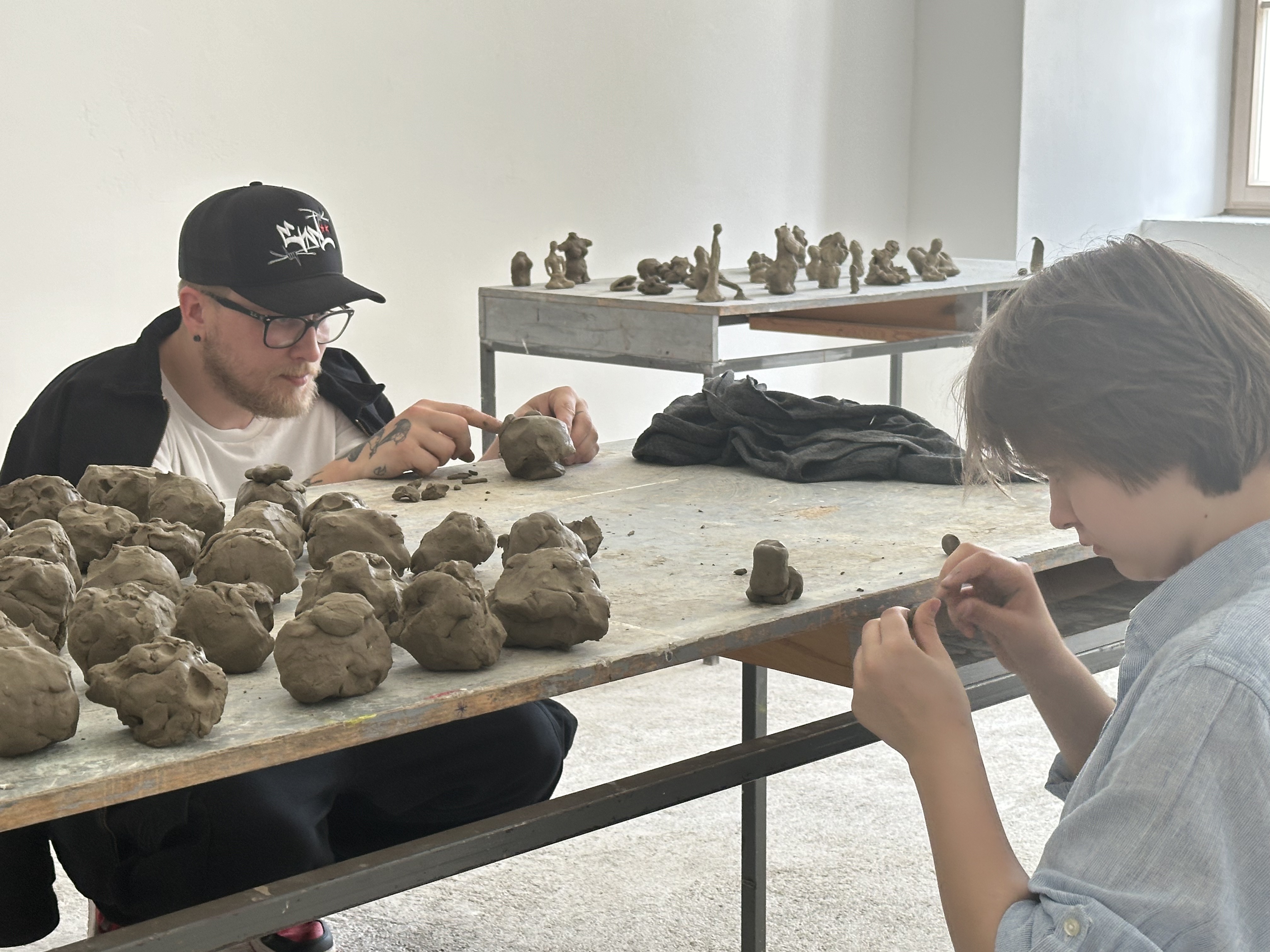

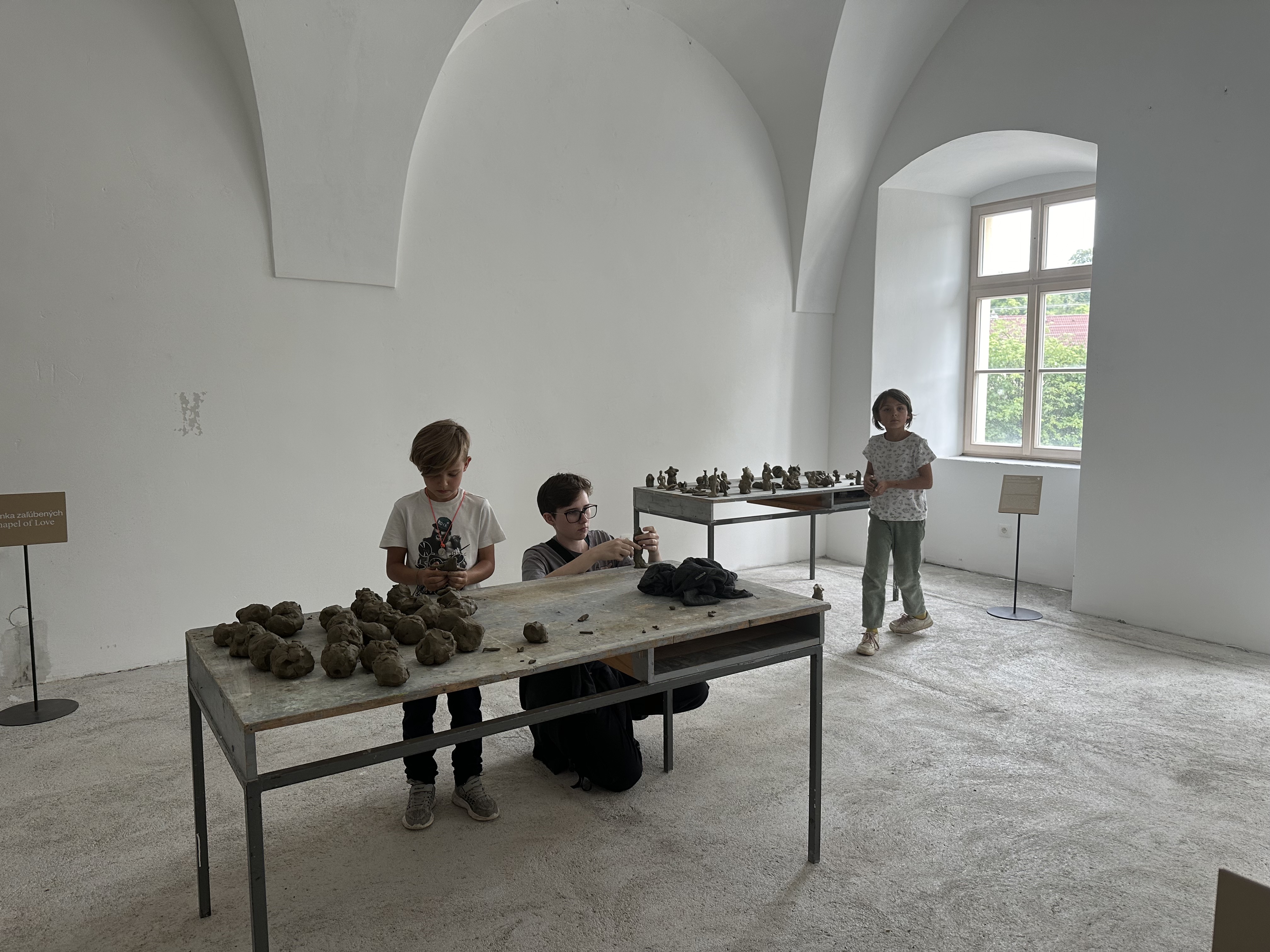
foto: Zuzana Branišová